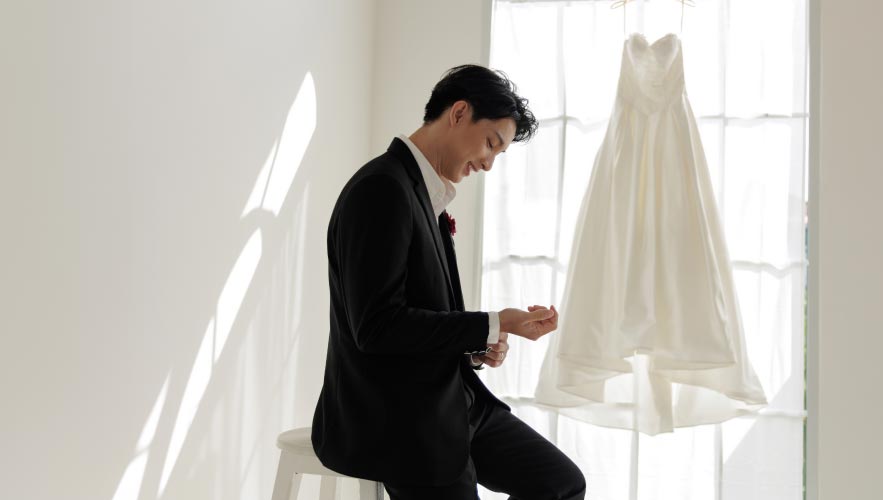What Is the Difference Between Tuxedo and Suit?
When it comes to formal attire, the terms "tuxedo" and "suit" are often used interchangeably, leading to confusion among many individuals. However, while both garments are suitable for formal occasions, they each have distinct characteristics that set them apart. In this blog, we delve into the key differences between a tuxedo and a suit, helping you understand when to opt for each and how to make the right choice for your next formal event.
What is a Tuxedo? A tuxedo, short for "tuxedo jacket," is a formal ensemble typically worn for evening events and black-tie affairs.
It is characterized by several distinguishing features, including satin lapels, satin stripes along the trousers' outer seams, and often, a satin stripe along the jacket's lapel. Tuxedos traditionally feature a bow tie and are worn with a formal dress shirt, usually in white or black. Additionally, tuxedos are commonly accompanied by accessories such as a cummerbund or waistcoat and patent leather dress shoes. The overall aesthetic of a tuxedo is sleek, sophisticated, and tailored for formal elegance.
What is a Suit? On the other hand, a suit is a versatile ensemble suitable for a wide range of occasions, from business meetings to weddings and everything in between.
Unlike a tuxedo, a suit typically features a standard notch or peak lapel made from the same fabric as the jacket. Suits can be worn with a variety of shirt and tie combinations, allowing for greater flexibility in personal style. Additionally, suits are often paired with dress shoes in leather or suede and can be accessorized with a belt or suspenders for added polish. The overall aesthetic of a suit is classic, professional, and adaptable to various dress codes and settings.
Key Differences Between a Tuxedo and a Suit:
-
Occasion: Tuxedos are reserved for formal evening events and black-tie affairs, while suits are appropriate for a broader range of occasions, including business meetings, weddings, and social gatherings.
-
Lapels: Tuxedos feature satin lapels, whereas suits typically have notch or peak lapels made from the same fabric as the jacket.
-
Trousers: Tuxedo trousers often have satin stripes along the outer seams, while suit trousers do not feature this detail.
-
Shirt and Tie: Tuxedos are worn with a formal dress shirt and bow tie, while suits offer more flexibility in shirt and tie combinations, allowing for personal style expression.
-
Accessories: Tuxedos are commonly accompanied by accessories such as a cummerbund or waistcoat, while suits may be accessorized with a belt or suspenders for added polish.
Understanding the key differences between a tuxedo and a suit is essential for selecting the appropriate attire for formal occasions. While both garments share similarities in their tailored aesthetics, they each have unique characteristics that cater to specific dress codes and settings. Whether you're attending a black-tie gala or a business conference, choosing between a tuxedo and a suit depends on the occasion's formality and your personal style preferences. By familiarizing yourself with these distinctions, you can confidently navigate the world of formal attire and make a stylish statement at your next event.



















Leave a comment